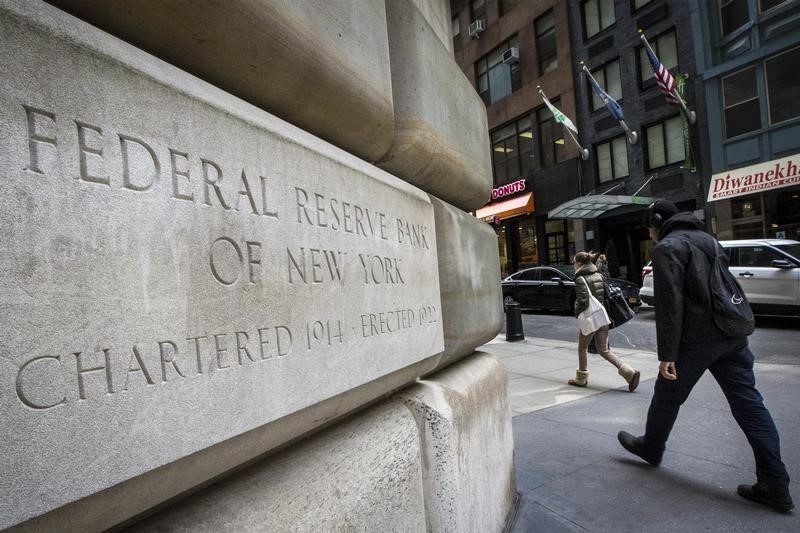(Bloomberg) -- Americans increased their borrowing for the 23rd straight quarter to a total of $14.3 trillion, according to the Federal Reserve Bank of New York, the latest snapshot of household balance sheets entering what many experts believe to be a recession.
Total U.S. household debt rose by $155 billion in the first quarter from the previous three-month period, or 1.1%, the New York Fed’s quarterly report showed. Overall household debt is now 28.2% above the second-quarter 2013 trough.
The steady increase in consumer borrowing has continuously set new records with every passing quarter, but still remains shy of the inflation-adjusted $15 trillion that Americans owed in 2007, New York Fed data show.
Mortgage borrowing rose by $156 billion to $9.71 trillion. More than 80% of mortgage originations were among borrowers with a credit score of at least 720, the highest percentage in seven years. The median Equifax (NYSE:EFX) Risk Score -- in which lower scores indicate that a consumer could become seriously delinquent -- rose to 773.
The current economic downturn tied to the coronavirus pandemic is likely to hit black households hardest, according to research from the St. Louis Fed. Black families are about 29% more likely than white families to fall seriously behind on their debt, even after accounting for traditional credit factors such as debt-to-income ratios and savings.
Americans could tap their credit cards for an additional $3 trillion before the start of the second quarter, around the time the virus began to spread across the U.S. and parts of the economy were shutting down. Such a buffer would undoubtedly help some households maintain their consumption if they lost their jobs, boosting an economy that is heavily reliant on consumer spending. But poorer households have less access to credit to weather the downturn.
The poorest households have at most $150 to draw on their credit cards, New York Fed data show. By contrast, in zip codes where the average income is less than $45,000, the median amount of available credit is around $1,900. In the highest income areas typical credit availability is close to $14,000.
Lenders last quarter tightened standards on credit cards, auto loans and other typical household debt, according to the April Senior Loan Officer Opinion Survey on Bank Lending Practices, released Monday.
Banks generally tightened standards for household loans last quarter as demand for credit fell, according to a Fed survey of bank lending officers. In recent weeks some banks, such as JPMorgan Chase (NYSE:JPM), have increased minimum credit scores for certain types of mortgages.
Auto debt, which has risen for 36 consecutive quarters, increased $15 billion from the previous quarter to $1.35 trillion. More than 5% of auto loans are 90 days of more delinquent. This is the highest percentage since the first quarter of 2011.
Credit card delinquencies rose to 9.09% the highest level in more than two years.
About 189,000 consumers had a bankruptcy notation added to their credit reports last quarter, but the Fed said that the latest report reflects a time when many of the economic effects of the Covid-19 pandemic were only starting to be felt.
“We do see a larger-than-expected decline in credit card balances based on past seasonal patterns, but it is too soon to confidently assess its connection to the pandemic.” said Andrew Haughwout, senior vice president at the New York Fed.
Americans with federal student loan debt received a six-month reprieve thanks to the automatic suspension of their interest and payments by the recently passed federal stimulus package.
©2020 Bloomberg L.P.
